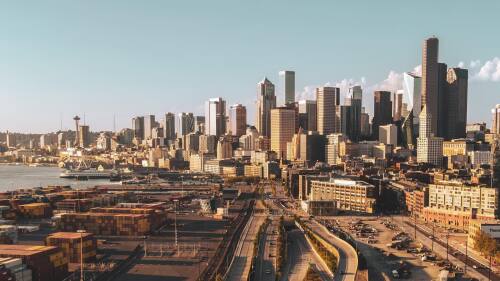You ever find yourself thinking, “Gosh, I’d love to spend our Saturday reading the hundreds of pages that make up the city budget?” Right, neither have we.
But it is something that will impact the things we care very much about like library funding, money for pothole fixes, park improvements, and health department resources.
The city is currently in the process of reviewing Mayor Bruce Harrell’s proposal — which he released in the last days of September — and is looking for public feedback while they do it.
Let us boil some of this down for you.
What’s inside 📖
There are two sides of the budget: operating and capital. The operating budget funds the day-to-day services like bus fuel costs and the capital budget funds one-time projects like building a new park.
The entire 2023 Seattle city budget includes $1.53 billion allocated for the capital side and $5.89 billion for operating costs. Pieces that are noteworthy about this year’s proposal (and certainly hot topics in the City Council and at your local pub): an increase in public safety funding, a lot of attention on housing, and continued efforts in parks clean-up.
The timeline ⏰
The City Budget “season” begins once the mayor has submitted his proposal (which happened September 27 this year), at which point City Council begins to review his suggestions and decides if they have edits they want to make.
A lot of those edits will be influenced by you, their constituents. So, if you have thoughts, here are the public hearings when you can voice ‘em.
- Tues., Oct. 11 | 5 p.m.
- Tues., Nov. 8 | 9:30 a.m.
- Tues., Nov. 15 | 5 p.m.
Meetings are available remotely + in person at City Hall. Written comment will also be accepted at any point in the process through email at council@seattle.gov.
The final budget must be approved by Dec. 2 or 30 days before the fiscal year kicks in on Jan. 1, 2023.











